
Imagine standing atop a towering mountain range, its jagged peaks scraping the sky, and there, embedded within the ancient stone, you discover the delicate impression of a long-dead marine creature. A mollusk shell, perhaps, or the intricate skeleton of a fish, millions of years old, resting far from any ocean. This seemingly impossible scenario isn’t a figment of imagination; it’s a real-world puzzle that challenges our understanding of Earth’s dynamic past and precisely the kind of profound mystery that the science of paleontology is uniquely equipped to unravel.
Paleontology is far more than just digging up dinosaur bones; it is a captivating journey into the scientific study of the life of the past, primarily, though not exclusively, through the diligent examination of fossils. It is a discipline that bridges epochs, allowing us to reconstruct ancient ecosystems, understand the ebb and flow of biodiversity, and piece together the grand narrative of our planet’s history. Through this extraordinary field, we gain the crucial context needed to comprehend how marine life could once thrive where now only alpine winds blow.
Indeed, the quest to understand life’s ancient story is a monumental undertaking, touching upon countless scientific inquiries. Paleontologists serve as detectives of deep time, using these mineralized whispers of the past—fossils—as vital clues. They classify organisms that once roamed or swam, meticulously measure the passage of geologic time, and carefully assess the intricate interactions between prehistoric organisms and the natural environments they inhabited. It is a field brimming with discoveries that constantly reshape our perception of life’s enduring resilience and profound transformations.

1. Defining Paleontology: The Science of Past Life
Paleontology, or palaeontology as it is often spelled in the United Kingdom, stands as the scientific study of past life, fundamentally characterized by, but not exclusively defined by, the interpretation and examination of fossils. Its roots stretch back to observations made as early as the 6th century BC, though its formal establishment as a rigorous science is more recent, tracing back to transformative work in the late 18th century. It is a discipline that systematically investigates the ancient biota of Earth, providing an unparalleled window into biological and environmental changes across vast spans of time.
At its core, paleontology equips scientists with the tools to classify organisms that no longer exist, to precisely measure vast stretches of geologic time, and to intricately assess the complex relationships that once characterized prehistoric organisms and their natural surroundings. It delves into the anatomy, physiology, ecology, and chronology of life on Earth, offering a direct source of information that is invaluable for understanding the long-term patterns of life’s evolution and extinction. The fossil record, incomplete as it may be, serves as a crucial natural laboratory for testing hypotheses across a wide spectrum of scientific disciplines.
This vibrant field actively engages with a wide array of other sciences, illustrating its inherently interdisciplinary nature. It overlaps most significantly with geology, which provides the context of Earth’s crust and ancient environments, and with biology, which offers frameworks for understanding life processes and evolution. Beyond these primary partners, paleontology draws on and contributes to ecology, chemistry, physics, and even mathematics, demonstrating its comprehensive approach to deciphering the ancient world. Such collaboration enriches both paleontology and its allied fields, fostering a holistic view of Earth’s dynamic systems.
Paleontology’s contributions extend further, being instrumental in biostratigraphy—the use of fossils to correlate and date rock strata—which helps reconstruct Earth’s geologic time scale. It also plays a critical role in studies of extinction, aiding in the identification of both internal and external factors that can lead to the disappearance of species. The increasing integration of theoretical analysis, especially since the 1950s and 1960s, has given rise to more specialized fields within paleontology, allowing researchers to explore specific aspects such as Earth’s changing geography and climate, the phylogenetic relationships between different species, and the complex processes of fossilization itself.
Read more about: Unearthing Ancient Worlds: A Deep Dive into Paleontology’s Groundbreaking Revelations and Its Unfolding Story

2. The Genesis of a Science: Georges Cuvier and Extinction
The true foundation of paleontology as a distinct science can be unequivocally attributed to the pioneering work of Georges Cuvier in 1796. Before Cuvier, despite ancient observations of fossils, there was no coherent scientific framework to explain the presence of these enigmatic remains. His groundbreaking research provided the definitive evidence for a concept that would revolutionize natural history: extinction. Cuvier compellingly demonstrated that life forms of the past were not merely different from those of the present, but that entire species had vanished from the Earth forever.
Cuvier’s seminal paper, “On the species of living and fossil elephants,” published in 1796, was a pivotal moment. Through meticulous comparative anatomy, he showed that the fossils of mammoths from Siberia and Europe were distinct from any living elephants, just as the large fossil taxon *Megatherium* from Paraguay represented an animal too massive to remain undiscovered if still extant. Similarly, his studies on mastodons led to the same conclusion: these were species no longer alive. This rigorous approach effectively ended centuries of philosophical resistance to the idea that species could permanently disappear.
Following Cuvier’s monumental demonstration, the field of paleontology developed with remarkable rapidity. The term “paléontologie” itself, derived from ancient Greek words meaning ‘ancient,’ ‘relatedness,’ and ‘field of study,’ was formally introduced in 1822 by Henri Marie Ducrotay de Blainville, a former student of Cuvier. This linguistic recognition solidified the burgeoning discipline’s identity and provided a clear designation for the systematic study of ancient beings. The clarity that Cuvier brought to the concept of extinction was a crucial catalyst, allowing naturalists to move beyond conjecture and towards empirical understanding.
Initially, Cuvier explained these disappearances as “revolutions,” catastrophic events consistent with beliefs such as the Biblical Flood, rather than gradual environmental changes. He believed that all living organisms would perish in such events, and new ones would subsequently arise. While his views on the mechanism of change differed from later evolutionary theories, his insistence on extinction as a demonstrable fact paved the way for Charles Darwin, whose work on evolution and natural selection would eventually provide a more complete explanation for the changing tapestry of life over geological time. Cuvier’s legacy is immense, establishing the comparative anatomical methods that remain central to understanding past life.
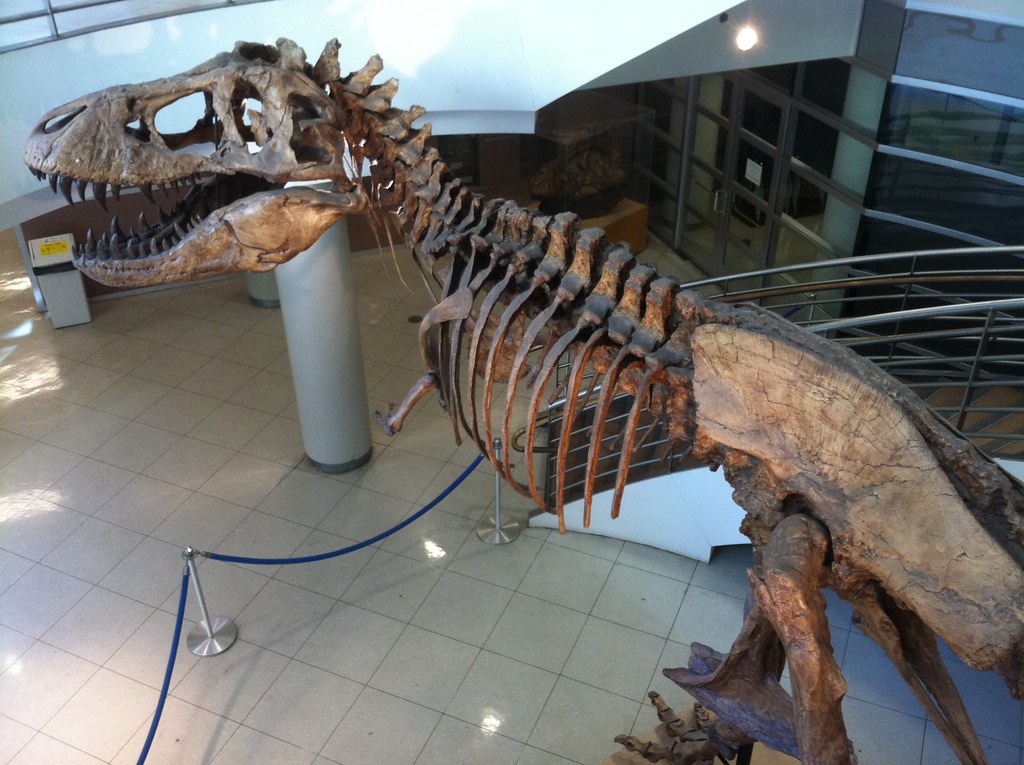
3. An Interdisciplinary Nexus: Paleontology’s Scientific Allies
Paleontology is inherently a crossroads of scientific inquiry, forming strong bonds with a diverse array of disciplines. Its most significant overlaps are with geology, which provides the temporal and environmental framework for fossil discoveries, and with biology, which supplies the theoretical backbone for understanding life processes, classification, and evolution. This symbiotic relationship means that paleontological discoveries frequently inform and are informed by breakthroughs in these sister sciences, creating a richer, more comprehensive understanding of Earth’s history.
Beyond geology and biology, paleontology readily integrates knowledge and methodologies from ecology, chemistry, physics, and even mathematics. Sub-disciplines such as paleobiology and paleoecology, for instance, are direct analogues to modern biology and ecology, but specifically apply these principles to past life and ancient environments. This interdisciplinary approach allows paleontologists to draw on a wide range of analytical techniques and theoretical models, from geochemical analysis of ancient sediments to biomechanical modeling of extinct organisms.
Moreover, paleontology isn’t just a recipient of information; it actively contributes to other scientific fields. For instance, its application in biostratigraphy is crucial for reconstructing Earth’s geologic time scale, providing a method for relative dating of rock layers globally. In extinction studies, paleontological data helps establish both internal biological factors and external environmental or catastrophic events that lead to species disappearance. The insights gained from the fossil record about past climatic changes, biogeographical shifts, and evolutionary pathways are invaluable to modern climate science, conservation biology, and ecological research.
Significant advances in paleontology have occurred through the introduction of theoretical analysis, particularly during the 1950s and 1960s. This intellectual shift led to the rise of more focused fields within the discipline, such as those assessing Earth’s changing geography and climate, meticulously studying the phylogenetic relationships between different species, and rigorously analyzing the processes of fossilization and the biases that can impact the quality of the fossil record. These theoretical underpinnings have transformed paleontology into a more predictive and robust science, capable of addressing complex questions about life’s long journey.
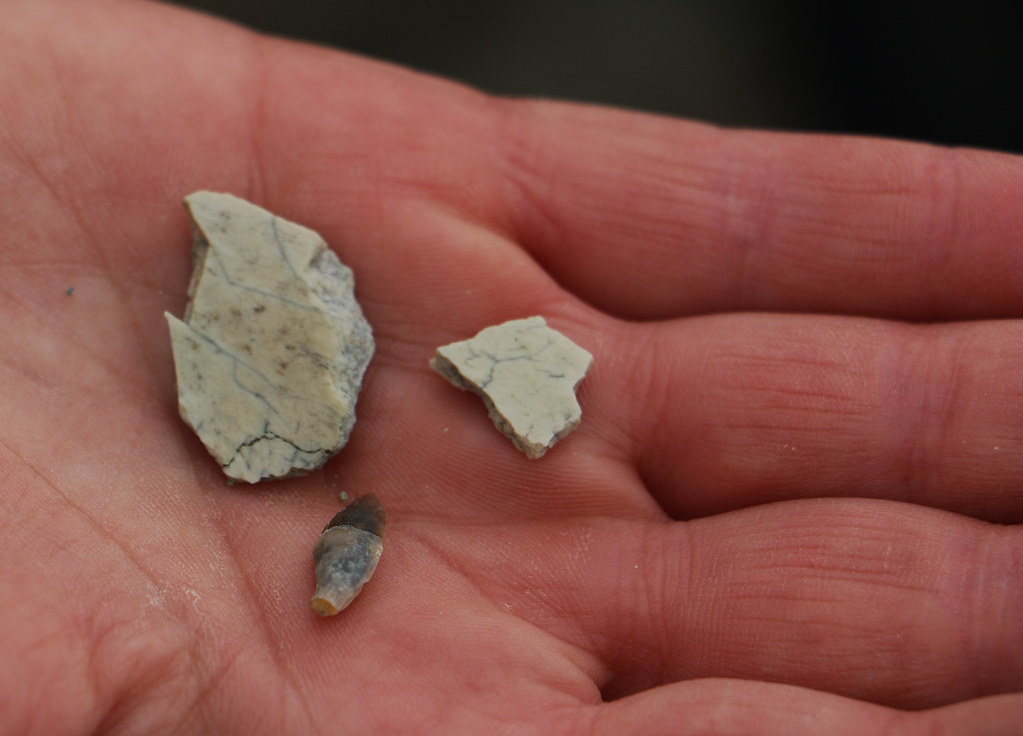
4. Beyond the Lab: Paleontology’s Public Profile and Cultural Resonance
Paleontology holds a unique and elevated position in the public imagination, standing as one of the most high-profile sciences, often compared in media attention to fields like astrophysics or global health. This widespread fascination with ancient life traces back millennia, with indigenous peoples across various continents interpreting discovered fossils as the bones of mythical dragons, awe-inspiring giants, or other fantastical creatures, weaving them into rich mythologies and oral traditions long before modern science provided its explanations.
Today, the allure of prehistoric life permeates popular culture, inspiring a vast array of media and entertainment. Dinosaurs, in particular, serve as muses for toys that ignite childhood wonder, captivating television shows and films that bring ancient worlds to vivid life, and intricate computer games that allow players to interact with extinct creatures. The tourism industry also capitalizes on this fascination, with museums, national parks, and fossil-hunting sites drawing millions annually. Remarkably, the budgets allocated for these public projects often far exceed the direct funding available within the field of paleontology itself, underscoring its immense cultural pull.
However, this high public profile, while beneficial for raising awareness, also presents complexities. The popularity has, at times, led to concerns regarding the exploitation and “imperialism” of fossils. Historically, many significant fossil collections have been accumulated for institutions in Europe and North America, sometimes at the expense of local communities or source countries. Furthermore, public appeals for sponsorships can, by their very nature, benefit certain areas of paleontological research that are deemed more glamorous or accessible to the public, potentially at the detriment of equally vital but less visually exciting aspects of the science.
Despite these challenges, the public’s enduring fascination with paleontology is a powerful force. It fosters a sense of wonder about the natural world and deep time, encouraging generations to ask profound questions about where life came from and how it has changed. The captivating narratives unearthed by paleontologists, from the smallest trilobite to the largest sauropod, continue to inspire curiosity and provide a tangible connection to the deep past, making the science relevant and exciting to a broad audience far beyond academic circles.

5. Fossils Unveiled: From ‘Dug-Out’ to Organic Evidence
Before the 19th century, the word “fossil” held a much broader meaning than it does today. It was simply a descriptive noun used to characterize anything that had been “dug out of the ground,” encompassing a vast array of objects including ancient bones, sparkling stones, and precious gems. Early descriptions of what we now recognize as true fossils were often presented alongside and within the context of other inorganic materials like minerals, crystals, and various rocks, blurring the lines between organic and purely geological formations.
These early publications showcased a wide spectrum of “fossils,” ranging from clearly organic remains with differing qualities of preservation to inorganic concretions and geological structures that merely bore a superficial resemblance to living organisms. The distinction between organic and inorganic was not clear-cut, and the criteria for separating them were only gradually refined over centuries. This ambiguity meant that accounts prior to the 19th century may not reflect the precise use of the word “fossil” that modern paleontology employs, requiring careful interpretation of historical texts.
For a long time, fossils were not widely believed to be of organic origin. Instead, many thought they exhibited the same kind of “growth” as crystals or were simply odd formations of the earth, often attributed to divine forces. Support for a possibly organic nature of fossils began to emerge in the 17th century, yet it remained a contentious idea. The fact that different quarries or strata yielded distinct types of “fossils” was confusing to scientists of the time, who lacked the broader geological and evolutionary context to explain such variations. The observation that most fossils came from organisms never seen alive anywhere in the world seemed to imply extinction, a concept that contradicted the then-prevalent belief in a perfect, unchanging divine creation.
Further compounding the mystery was the discovery of fossils of apparently marine animals found in parts of the world far above sea-level, precisely the kind of observation that inspired our opening scenario. Some early thinkers suggested that these fossils had accumulated in horizontal layers under the sea and were subsequently displaced from their original positions by tectonic activity. As these observations accumulated and were gradually understood over time, it eventually became clear that fossils could indeed be used to make profound inferences about the history of life, based on their presence or absence in particular areas and across geological time.
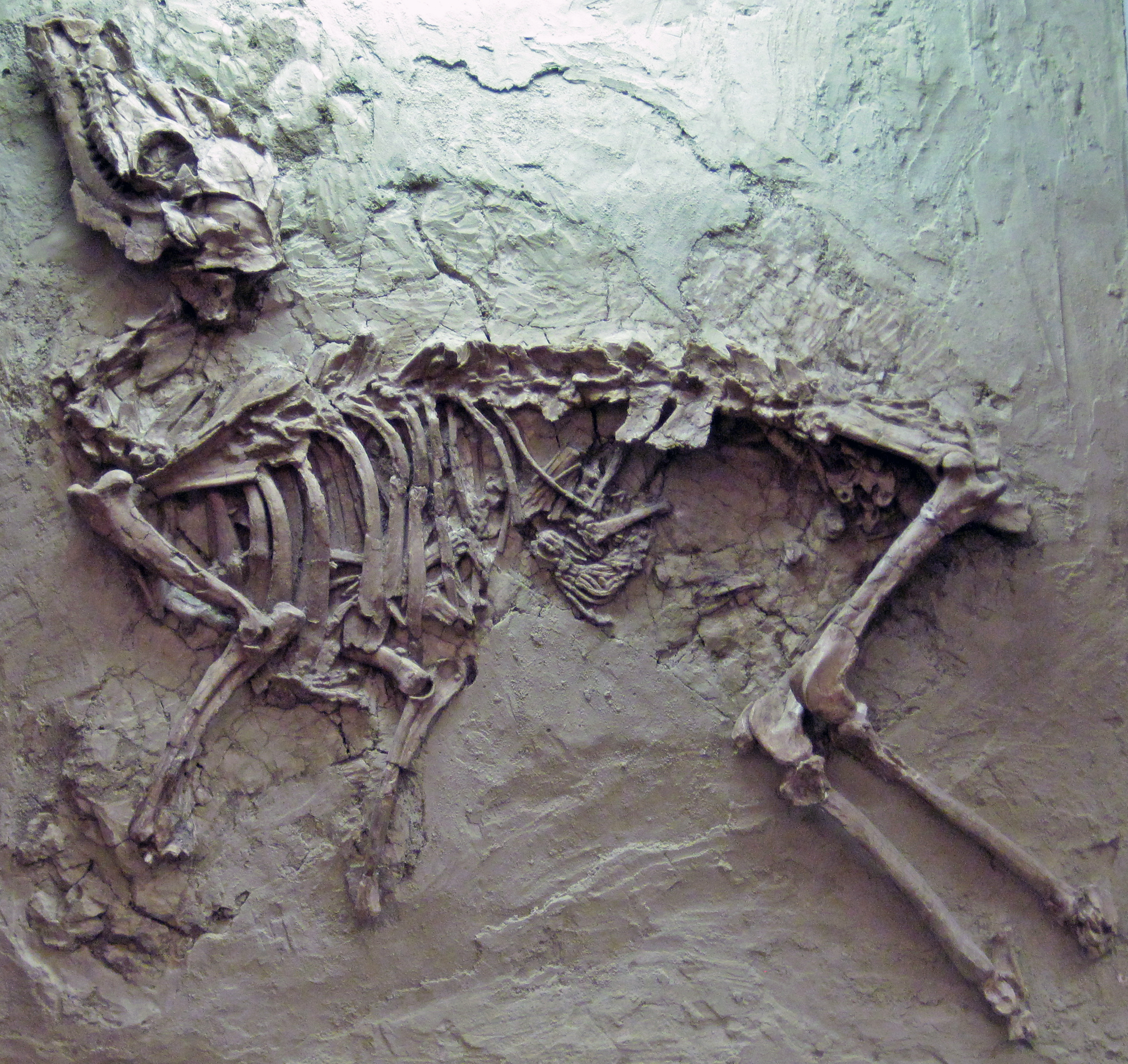
6. The Art of Preservation: How Life Becomes a Fossil
The fossil record serves as the primary and most indispensable tool scientists utilize to study the history of life and to assess how life has diversified over eons. While it is an extraordinary chronicle, it is also inherently incomplete. For instance, very little is known about the absolute origins of life and the oldest life forms, largely a result of the poor quality of fossil preservation in the most ancient rocks. Older geological formations, on average, preserve less information than those deposited more recently, an effect that compounds across the billions of years life is believed to have existed.
Most fossils are formed from the hard parts of an organism, such as bones, wood, or shells. These hard structures are typically recrystallized by minerals present in the surrounding sediment, preserving the original form in a material that can be harder or denser than the living tissue. While the hard parts are the most likely candidates for fossilization due to their inherent durability, soft tissues, though far rarer, can also leave impressions on fine-grained sediment before they fully decompose. This allows for the preservation of non-mineralized anatomical details, offering even more complete glimpses into ancient life.
In even rarer instances, an entire organism can be rapidly encased in sediment before decomposition sets in, leading to exceptional preservation. Such discoveries, though uncommon, provide invaluable insights into the full anatomy and sometimes even the internal structures of extinct creatures. Moreover, not all fossils are direct remains of an organism’s body. Some, known as trace fossils, consist of evidence of an organism’s behavior or life activities. These can include preserved burrows, footprints, or coprolites (fossilized faeces), each offering unique behavioral clues to the habits of ancient inhabitants.
Despite the incredible volume of fossils discovered, it’s a stark reality that only a tiny minority of all dead organisms will ever undergo the complex process of fossilization. Numerous factors conspire to destroy organisms both before and after they might become fossils, including the relentless actions of scavengers, decomposers, and natural disasters. Even after a fossil has formed and been buried, it can still be destroyed by taphonomic processes or by weathering if it is exposed to the elements and not collected by vigilant paleontologists. The original habitat of an organism also significantly impacts its chances: seafloors are generally more conducive to fossilization than land environments, and rivers or lakes offer better conditions than mountains or deserts, though marine fossils found on mountain tops stand as testament to profound geological upheaval.
Furthermore, even after potential fossilization and exposure, there are biases in what gets collected and studied. Fossilized teeth, for example, are remarkably common but are not always collected when found. Conversely, more complete fossils, while much rarer in absolute terms, are often prioritized for collection. Even after collection, fossils may languish in museum storage for extended periods, remaining unstudied or inaccessible to scientists, awaiting the day their silent stories can finally be told. These challenges underscore the monumental effort required to piece together the history of life from its sparse and scattered remnants.
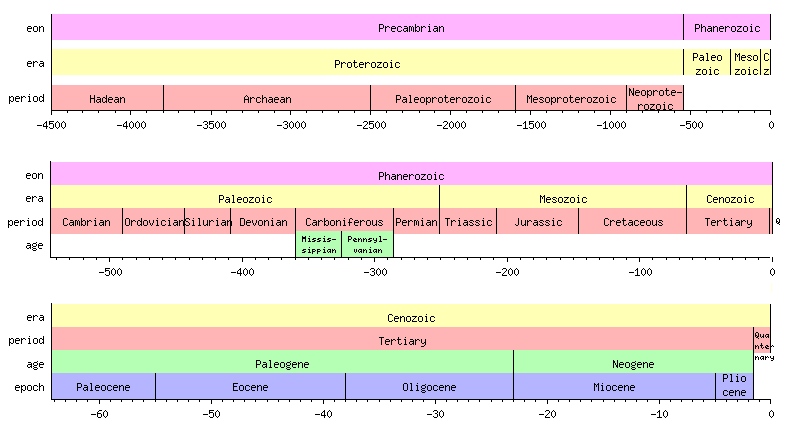
7. Charting Deep Time: The Geologic Time Scale
The vast tapestry of Earth’s history, spanning billions of years, presented an immense challenge to early geologists and paleontologists. Initial discussions in the nascent field of geology often intertwined with theological beliefs, particularly regarding the origins of geological features and their implications for Christianity. Many believed that geological changes, such as the formation of expansive strata, were the direct result of catastrophic events like the Biblical Flood, rather than the product of slow, continuous processes unfolding over immense periods. This early perspective constrained the understanding of Earth’s true antiquity.
However, pioneering thinkers like French naturalist Georges Cuvier and his contemporaries began to challenge this narrow view. They posited that Earth possessed a vast “prehuman” or “antediluvian” history, a concept that moved beyond both the idea of a recently created Earth (Young Earth Creationism) and an infinitely old one. While Cuvier wasn’t the first to suggest a lengthy, finite age for our planet, he was instrumental in connecting this profound idea with the study of fossils. He argued that prehistoric events could indeed be deciphered through the meticulous examination of geological formations and the fossil record, providing a scientific framework for understanding deep time.
The ongoing study of rocks and their stratigraphy—the layering of sedimentary deposits—further propelled this understanding. Geologists meticulously developed maps that highlighted the relative ages of regional geological formations, painstakingly piecing together a chronological sequence. Yet, even with these advances, the pervasive influence of earlier beliefs meant that the Biblical Flood often remained a primary, albeit sometimes implicit, explanation for the formation of many of these intricate geological features. The path to fully embracing a deep time perspective was a gradual one, requiring revolutionary insights to disentangle scientific observation from established dogma.
It was through such diligent efforts and subsequent conceptual breakthroughs that the geologic time scale, as we know it today, eventually came into being. This monumental framework was designed to systematically categorize and separate the immense history of Earth into a hierarchy of named geochronological units. Defined and standardized by the International Commission on Stratigraphy, this scale is constantly refined through absolute and relative dating methods, recognizing four eons, ten eras, 22 periods, 37 epochs, and 96 ages. Our current moment, the Meghalayan age of the Holocene epoch, within the Quaternary period, Cenozoic era, and Phanerozoic eon, stands as a testament to this incredible scientific achievement, allowing us to contextualize all life within Earth’s grand narrative.
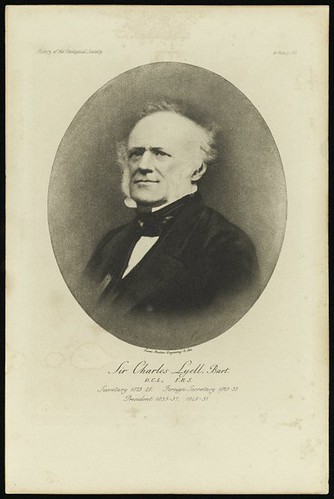
8. Charles Lyell’s Uniformitarian Revolution and Earth’s Dynamic Crust
A truly transformative figure in challenging the prevailing catastrophic views of Earth’s history was the English geologist Charles Lyell. He was among the first to present compelling arguments against the notion of a single, great flood, building his case on meticulous observations of geological phenomena. Lyell noted the striking existence of overlapping terrestrial and marine sediment layers, a pattern that strongly contradicted the idea of a singular, globally destructive deluge. His work laid the groundwork for a radical shift in geological thought, moving away from sudden, cataclysmic events towards a more gradual, continuous understanding of Earth’s processes.
Lyell’s keen observations extended to the dynamic nature of Earth’s surface. He recognized that the twisting, uplifting, and carving of geological features were not isolated incidents but rather evidence of a continuously moving crust, with sea levels also adjusting and fluctuating over vast timescales. This interpretation was not merely supported by the varying levels of marine strata he encountered but was powerfully reinforced by the shared commonality of fossils he discovered within these layers. These fossils, often found across great distances and at dramatically different elevations above sea level, hinted at a widespread, interconnected, and ever-changing ancient world.
Synthesizing these profound facts with his own prior research and the accumulating geological evidence, Lyell proposed a set of core principles that would fundamentally reshape the understanding of Earth’s history. He advanced the idea of “progressive trends” in the history of life, suggesting that change was not random but followed discernible patterns. Crucially, he argued that geological history was in a state of continuous flux, characterized by alternating periods of calm and chaos. Most significantly, Lyell posited that the very causes of these geological events were as active and observable in the present day as they had been in the deep past – a concept known as uniformitarianism.
This uniformitarian perspective, asserting that the same natural laws and processes that operate today also operated in the past, provided a powerful lens through which to interpret Earth’s ancient story. It moved away from invoking supernatural or unique catastrophic events, instead emphasizing observable, gradual processes. Lyell’s monumental contribution was to provide a scientific foundation for understanding how immense changes could accumulate over vast stretches of time, making sense of phenomena like marine fossils atop mountains. His insights were not only foundational to geology but also deeply influenced Charles Darwin, providing the necessary deep-time framework for the theory of evolution to take root.
Read more about: Unearthing Ancient Worlds: A Deep Dive into Paleontology’s Groundbreaking Revelations and Its Unfolding Story
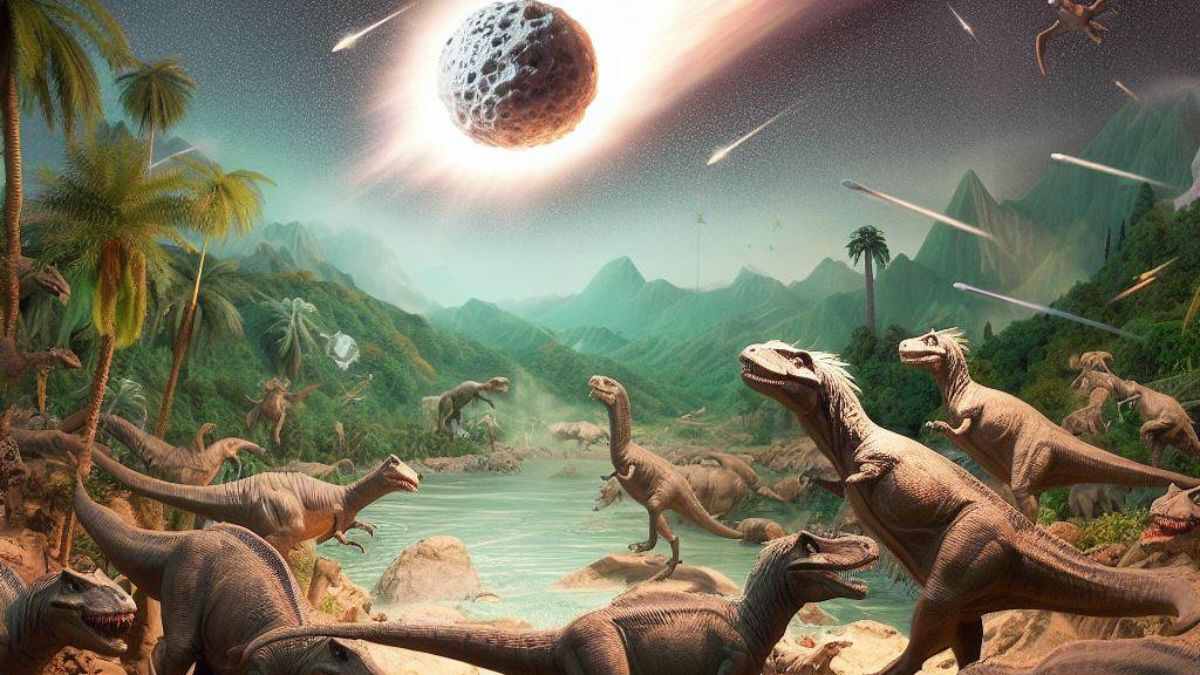
9. Extinction: Unraveling Life’s Endings in the Fossil Record
The concept of extinction, while seemingly intuitive today, was for much of human history a profoundly contentious idea. Ancient philosophers like Plato and Aristotle believed in a static, perfect world, where all existing life forms had always existed and would continue to do so. This entrenched philosophical and theological belief meant that any evidence suggesting the disappearance of species was largely ignored or ingeniously explained away by early naturalists. The fossil record, replete with remains of unknown creatures, remained a perplexing mystery, often attributed to mythical beings or strange geological formations.
It was Georges Cuvier, whose work we discussed earlier, who finally shattered this ancient paradigm. His groundbreaking publication, “Recherches sur les ossemens fossiles” (Investigations on Fossil Bones), provided irrefutable evidence that organisms represented by fossils were indeed once-living species that had completely vanished from Earth. By the early to mid-19th century, it was no longer controversial to accept that fossil animals existed in a sequential order, and that the flora and fauna of Earth had undeniably changed over time. Cuvier himself, however, staunchly denied any direct continuity between these ancient forms and organisms alive today, asserting that all fossil species were extinct.
Cuvier initially explained these disappearances as “revolutions”—sudden, catastrophic events that wiped out all living organisms, after which new ones would arise. This view was consistent with contemporary beliefs, such as the Biblical Flood. He did not believe in gradual environmental change or evolution, seeing extinction and evolution as conflicting explanations. His denial that any presently extant organisms had existed in the past further solidified his revolutionary theory. This understanding of extinction as a demonstrable fact, however, paved a crucial path for future scientific thought.
The full explanation for the changing tapestry of life over time only emerged with the work of English naturalist Charles Darwin, who integrated the concept of extinction with his theory of evolution. Darwin proposed that extinction and evolution were complementary processes, both driven by natural selection. The fossil record, in this new light, clearly showed that there was no predetermined lifespan for any particular organism or group, and it also provided compelling evidence for periods where a large percentage of organisms vanished simultaneously—what we now call mass extinction events.
Today, paleontologists continue to grapple with the complexities of extinction. While modern biologists assess extinction rates by observing the presence or absence of species in nature, paleontologists face inherent limitations due to the rarity and incompleteness of the fossil record. These challenges make it difficult to precisely infer past extinction rates and to differentiate between a “true extinction” and a “pseudoextinction,” where one species gradually evolves into another. Despite these hurdles, at least five major mass extinction events have been identified throughout Earth’s history, alongside a continuous “background extinction rate” for most species. Unraveling the specific causes for most individual extinctions in the fossil record often remains an enduring challenge.
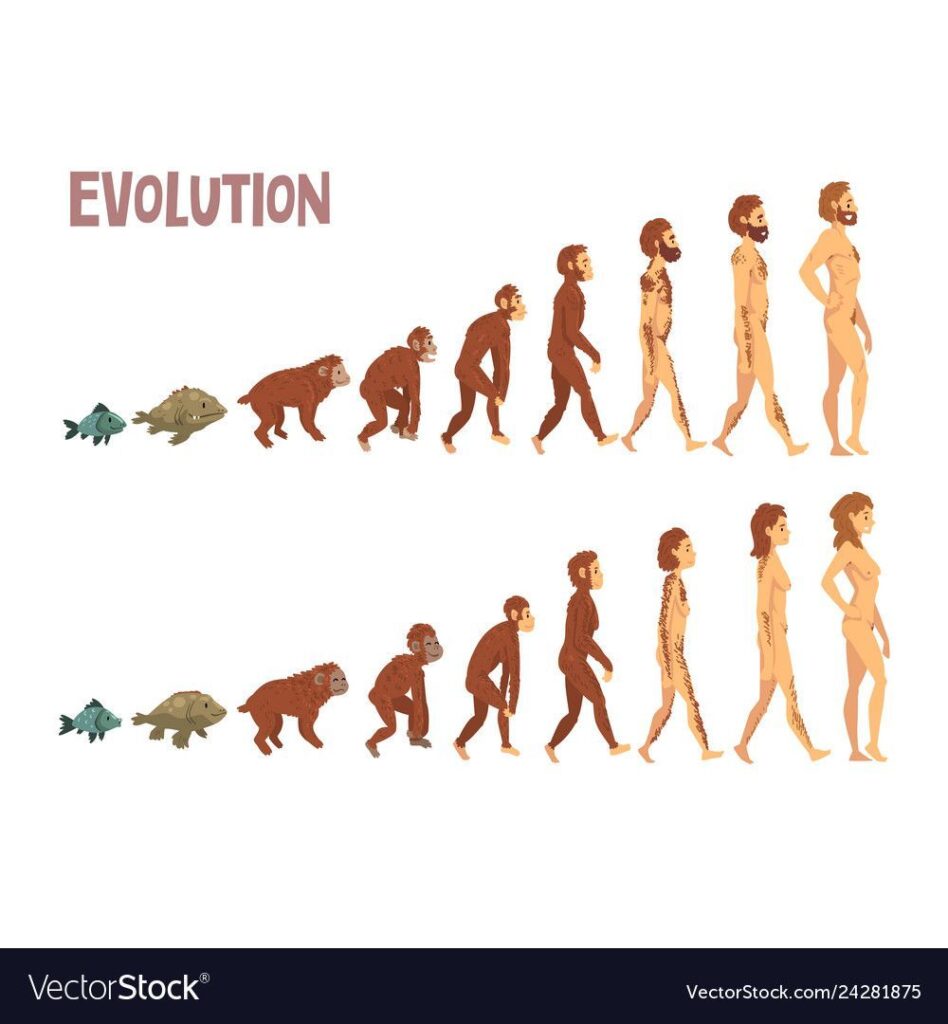
10. Evolution: The Fossil Record’s Testament to Life’s Transformations
For the vast majority of human history, prevailing philosophical and religious beliefs held that the world, including its diverse life forms, was divinely ordered and static. The concept that life could have undergone profound changes or progressed through natural processes was largely dismissed. While a few ancient thinkers, like the Greek philosopher Empedocles, speculated that fossils might be remnants of life that had changed, such ideas were exceptional. Most doctrines, including prominent Abrahamic religions, taught that life was created as it currently exists, viewing the natural world as a product of intelligent design rather than progressive evolution.
The evolutionary significance of the fossil record was initially overlooked because individual fossils often provide only isolated “snapshots” of evolutionary history, not a continuous film. However, the burgeoning understanding of how traits could be passed down through generations eventually led French naturalist Jean-Baptiste Lamarck in the 19th century to argue for evolution. Early proponents of evolution often believed that a divine force initiated the world, then allowed it to progress naturally. Critics like Cuvier, however, remained skeptical, believing that any proposed intermediate forms would have been too ill-adapted to survive, thus rejecting the possibility of evolution outright.
It was Charles Darwin, profoundly influenced by Lyell’s work on deep time, who revolutionized this understanding. During his voyage aboard the HMS Beagle, Darwin meticulously studied similarities and differences among organisms, observations that culminated in his seminal work, “On the Origin of Species.” In this transformative book, Darwin introduced the concept of natural selection, proposing it as the fundamental mechanism driving evolution. He also astutely suggested that the apparent gaps in the fossil record were not evidence against evolution but rather a consequence of incomplete fossilization, predicting that transitional fossils would eventually be discovered to corroborate his theory.
Darwin’s predictions were soon validated by remarkable paleontological discoveries. The unearthing of theropods like *Compsognathus* and, most famously, *Archaeopteryx*, provided compelling evidence for the progressive evolution of birds from other reptiles. These finds dramatically shifted the focus of paleontological study towards understanding the intricate evolutionary pathways of life. Over subsequent decades, as geology and biology advanced into theory-based analysis, paleontology, initially lagging, transformed with the development of paleobiology in the latter half of the 20th century. This shift embraced conceptual changes in evolution and phylogenetics, recognizing paleontology as a crucial field for studying the evolution of life.
Today, paleontologists navigate the complexities of applying modern biological species concepts to ancient life. Lacking living organisms, they rely on morphological differences preserved in fossil remains as proxies for phenotypic variation, inferring species distinctions throughout deep time. The fossil record provides evidence for both gradual evolutionary changes, as hypothesized by phyletic gradualism, and short bursts of rapid evolution, consistent with punctuated equilibrium. Continuous new fossil discoveries further bridge gaps in our understanding of life’s intricate evolutionary history, from the emergence of early multi-cellular life in the Ediacaran biota to the complex diversification of modern groups, constantly enriching the grand narrative of life on Earth.
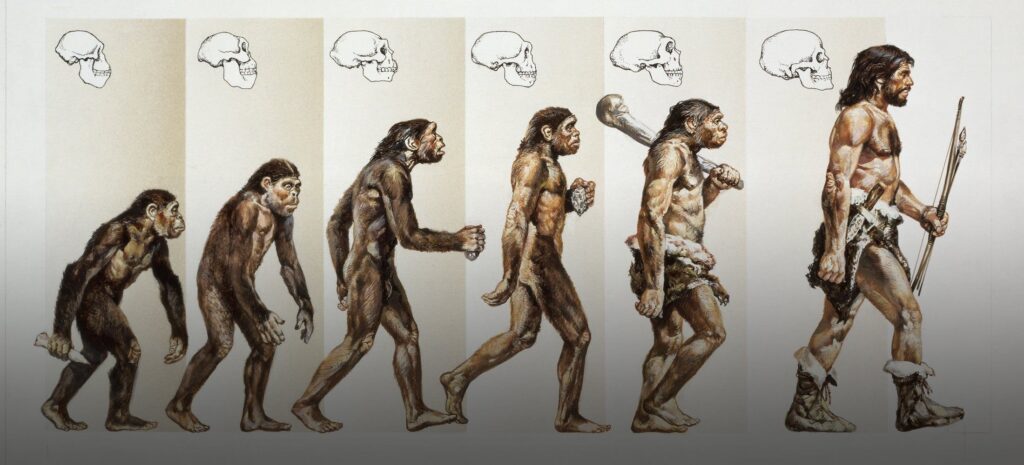
11. Human Ancestry Unveiled: Paleontology’s Insights into Our Evolutionary Journey
Among paleontology’s most profound and universally resonant contributions is its ability to illuminate the intricate story of human evolution. For centuries, the origins of humanity were shrouded in mystery, often explained through religious or mythological narratives. However, through the diligent excavation and analysis of hominin fossils, paleontologists have been able to construct a remarkably detailed, albeit still unfolding, narrative of our lineage, tracing the evolution of hominids from basal primates and clarifying the speciation and origins of humans within the broader hominid family.
Key fossil discoveries have dramatically reshaped our understanding of early human ancestors. For instance, the finds of *Australopithecus* and *Ardipithecus* have provided crucial evidence demonstrating that humans did not necessarily transition through a purely ape-like stage. Instead, these early hominids exhibited bipedal locomotion—walking upright—alongside adaptations for arboreal life, suggesting a complex, mosaic evolution. The discovery of *Ardipithecus* in lowland forest environments, rather than the expected grasslands, further challenges previous assumptions, indicating that humanity’s origins likely took place within a more variable and unpredictable habitat than once thought.
The evolution of humans within our own genus, *Homo*, is similarly complex and far from a simple, linear progression often depicted in popular illustrations. Paleontological evidence now shows that various species of *Homo* may have coexisted, overlapping in both time and geographical regions. However, a consistent thread through these diverse findings is the strong indication that the evolution of the genus *Homo* primarily occurred in Africa, establishing it as the cradle of humanity. This rich fossil record continues to be meticulously studied, revealing the nuanced pathways that led to our own species, *Homo sapiens*.
Beyond our direct ancestors, paleontological advancements have also cast new light on our close evolutionary relatives, the Neanderthals. Recent discoveries and reinterpretations of fossil evidence have revealed them to be a far more complex and sophisticated society than previously imagined. They were adept tool users, crafted clothing, and likely possessed their own forms of mythology and cultural practices. While genetic analysis of Neanderthal and human DNA shows substantial differences, it has also uncovered compelling evidence of interbreeding between these populations, highlighting a more intricate relationship and shared history than once conceived. These insights not only inform our past but also broaden our understanding of what it means to be human.

12. Modern Horizons: Unpacking Paleontology’s Evolving Frontiers and Applications
While the “heyday” of paleontology might popularly be associated with the Victorian era’s grand discoveries of new taxa, the field has far from stagnated; it has instead broadened significantly to encompass a wider array of scientific questions and methodologies. Modern paleontology is no longer solely focused on cataloging new species but deeply integrates into theoretical analysis, particularly since the conceptual shifts of the 1950s and 1960s. This evolution has fostered the rise of more focused sub-disciplines, such as paleobiology and paleoecology, which apply biological and ecological principles to past life and ancient environments with unprecedented rigor.
Technological advancements have played a pivotal role in this transformation. Paleontologists now draw on a sophisticated toolkit that includes geochemical analysis of ancient sediments, molecular biology techniques to extract and analyze ancient DNA (where possible), and advanced computer-aided visualization and analysis. These tools allow for a much deeper understanding of the processes of fossilization itself, including the biases that can impact the quality of the fossil record, and provide insights into Earth’s changing geography, climate, and the complex phylogenetic relationships between different species.
Modern paleontological research is increasingly addressing fascinating questions that transcend simple identification. For instance, the sheer sizes of some extinct giants—the largest dinosaurs, pterosaurs, or arthropods—pose intriguing challenges to fields like biomechanics, ontogeny (the study of development), and physiology. Understanding how such colossal creatures moved, grew, and functioned provides invaluable insights into the limits of biological systems and adaptation, furthering our comprehension of life’s remarkable diversity and resilience across geological time.
Furthermore, paleontology contributes significantly to other contemporary scientific endeavors. Its robust methods for establishing the ages of various rock formations are indispensable for geologists. It offers crucial context for understanding global climate change, providing a deep-time perspective on past climatic shifts and their impact on biodiversity. Conservation paleobiology, an emerging field, leverages the fossil record to inform modern conservation efforts, helping us understand long-term patterns of ecosystem health, species vulnerability, and recovery from environmental disturbances, proving that the study of ancient life holds profound implications for the future of our planet.
The grand narrative of life’s history, from its absolute origins to the present day, continues to be refined through paleontological discoveries. The extensive knowledge gained about the Ediacaran biota, the Cambrian explosion, and the evolutionary paths of diverse groups from birds to whales, and critically, our own human lineage, underscores the field’s continuous progress. As technologies improve and analytical precision sharpens, the depth of our understanding of past life will only continue to increase, continually unveiling new chapters in Earth’s enduring story and reinforcing paleontology’s vital role in connecting us to our planet’s deep, dynamic past.
The towering mountains, once ocean floors, now stand as silent sentinels, holding within their stony hearts the secrets of Earth’s ceaseless transformations. The 120-million-year-old marine fossils discovered at their summits are not mere curiosities; they are profound pronouncements from deep time, echoing the principles of uniformitarianism and the relentless march of evolution and extinction. Through the tireless work of paleontologists, armed with ever-advancing science and a passion for ancient life, we continue to piece together this magnificent planetary puzzle. Each fossil, whether a delicate shell or a mighty bone, is a testament to life’s enduring resilience, a whisper from a world long gone, teaching us invaluable lessons about the dynamic interplay between life and its ever-changing home. These discoveries are not just about the past; they are a vital compass for understanding our present and navigating the future of our living world.



